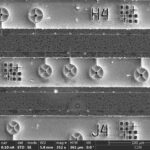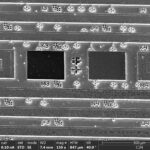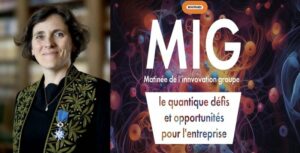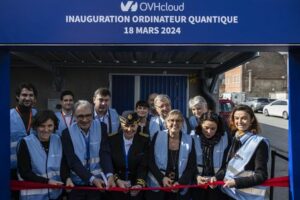A journey from solid-state physics to quantum technologies
Optics of semiconductor nanostructures
The optics of semiconductor nanostructures group is concerned with a wide spectrum of research topics going from fundemantel aspects of light-matter interactions to optoelectronic devices, and from electronics structure engineering to material characterization.
12th International conference on Quantum dots
Pascale Senellart was invited to the 12th International conference on Quantum dots that took place in Munich from the 18th to the 22nd of March 2024
Matinée de l'Innovation du Groupe Bouygues
Pascale Senellart presented the research activities of the group at “Bouygues Group Innovation Morning”
SEM images of deterministic micropillars on a single-photon-source device, Edelight 2024.





